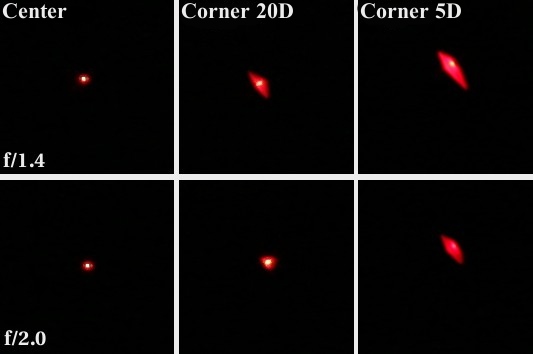Canon EF 35 mm f/1.4L USM
7. Coma and astigmatism
Please Support UsIf you enjoy our reviews and articles, and you want us to continue our work please, support our website by donating through PayPal. The funds are going to be used for paying our editorial team, renting servers, and equipping our testing studio; only that way we will be able to continue providing you interesting content for free. |
- - - - - - - - - - - - - - - - - - - - - - - - - - - - - - - - - - - - - - - - - - - - - - - -
Once again, a test on the full frame and small sensors in the same time gives us an opportunity to see how coma changes when we pass from one camera to another. Unfortunately, the result is not optimistic. By f/1.4 coma is significant even for 20D, almost gigantic on 5D. By f/2.0 is a lot better, because on 20D the level of this aberration decreases to an acceptable level, although on 5D the diode picture degradation is still strong. You can conclude that coma is partially responsible for the weak resolution results for the frame edge and at maximum aperture.

Luckily, when it comes to astigmatism it’s much better. It’s average level reached 5% what we consider a low result.






